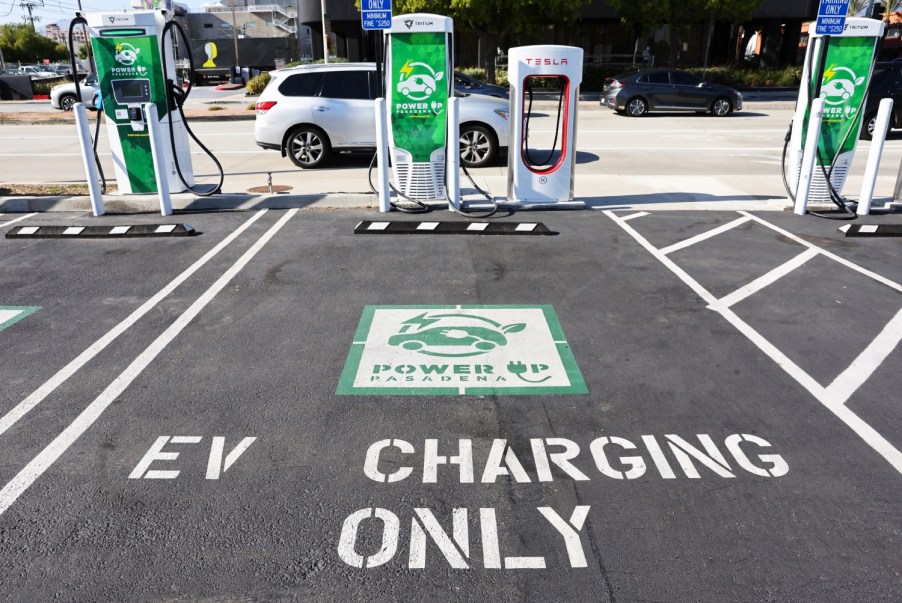
The Electric Vehicle Charging Situation Pushes Forward With Tesla, GM, and Ford
The switch to electric vehicles is in full swing, and some major brands are ramping up as we speak. According to CNBC, there are about two million EVs on the road right now, up more than six-fold since 2016. However, even though there are two million EVs on the road right now, that’s still small potatoes compared to the 280 vehicles overall. How are brands like GM, Ford, and Tesla dealing with the electric vehicle charging issue?
GM, Ford, and Tesla are working on the electric vehicle charging situation

CNBC says many complicated issues are wrapped up in the EV movement, such as batteries, upfront cost, range, etc. These are being figured out by companies behind-the-scenes. However, the issues of electric vehicle charging stations and a capable power grid are still getting figured out.
Passenger vehicles still account for one-fifth of greenhouse gas emissions. If the public is moving toward a zero-emissions goal in the next decade, switching to electric cars has to ramp up a bit. And soon. That means people need easy, cheap, accessible charging.
The Department of Energy says there are 55,417 electric vehicle charging stations in the U.S. and Canada. There are around 150,000 gas stations, for comparison’s sake. The time spent at a gas station is relatively short compared to the time spent at an EV charger. Depending on what kind of charger, you could easily be there for 15 to 30 minutes. That will leave people lingering around waiting to charge and slowing down the process even further.
CNBC says that the amount of electric vehicle chargers needed is about 20 times the current amount, around 1.2 million public chargers. The government aims to install another 500,000 chargers by 2030, thanks to the $7.5 billion from the Bipartisan Infrastructure Law.
Tesla had a head start on the electric vehicle charging network, but Ford and GM are not far behind
A spokesperson for GM said, “Public funding is especially important for highway corridor charging given the challenging business case as the EV market continues growing.”
“There is an ongoing need for cross-sector collaboration and policy support to streamline permitting, proactively engage electric utilities, accelerate siting and grid interconnection timelines, and eliminate other outstanding infrastructure deployment barriers.”
CNBC
Tesla has around 80% of the electric vehicle market right now. Most Tesla owners install a home charger, so the development of public charging stations hasn’t been as much of a priority. With that said, Tesla has a significant number of charging stations. GM and Ford have a lot, but are still working on rapid expansion.
GM says it is working on the Ultium Charge 360 project, which will help bring more chargers to convenient areas. It also means having electric vehicle chargers in places it might be lacking now, like multi-family housing, apartment buildings, or other strategic public locations that will reach more people.
The Tesla Supercharger network is opening-up
Elon Musk said the Tesla Superchargers would soon add CCS connectors to its chargers so non-Tesla vehicles can charge there. Ford and its BlueOval Charging Network have 20,000 charging stations and 60,000 plugs. But it still isn’t enough when entire cities are without easy and cheap sharing access.
GM plans to add 10 charging stations to its electric vehicle dealerships. That will add around 40,000 stations throughout the country. GM says 90% of Americans live within 10 miles of a dealership, making these chargers easy to get to for many.
“We want to give customers the right tools and access to charging where and when they need it,” said GM President Mark Reuss. GM is working on home chargers that customers will be able to lease with the EV. For now, the moves by GM, Ford, and Tesla are steps in the right direction. It won’t be possible without an all-hands-on-deck approach, which seems to be underway already.



